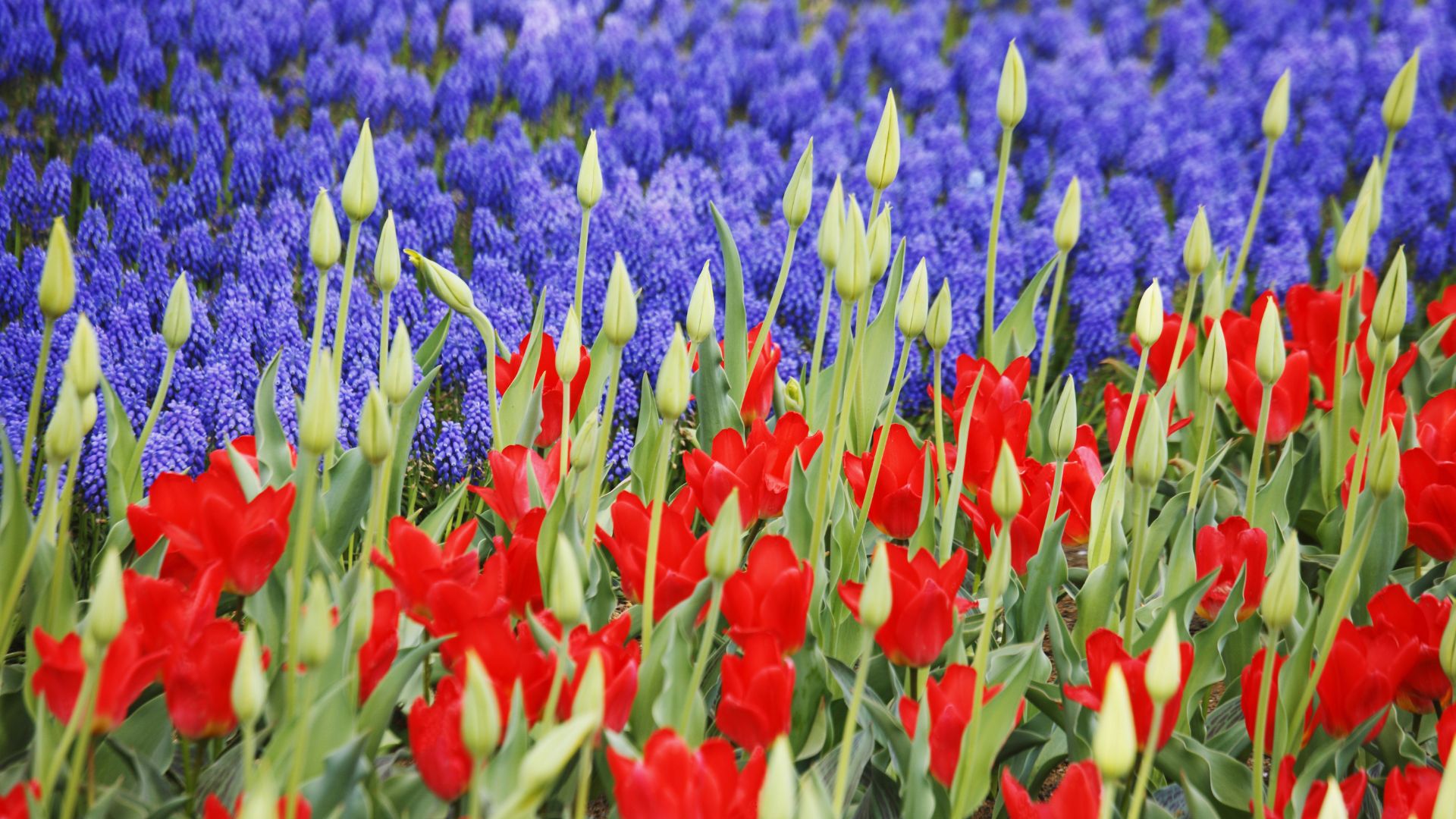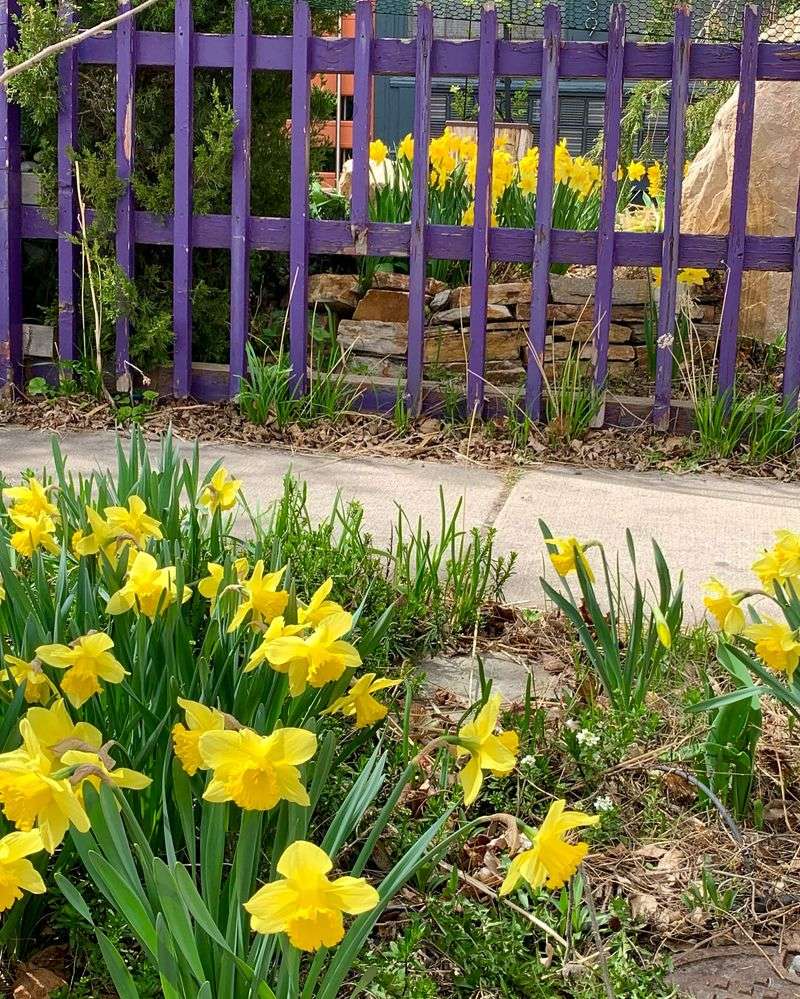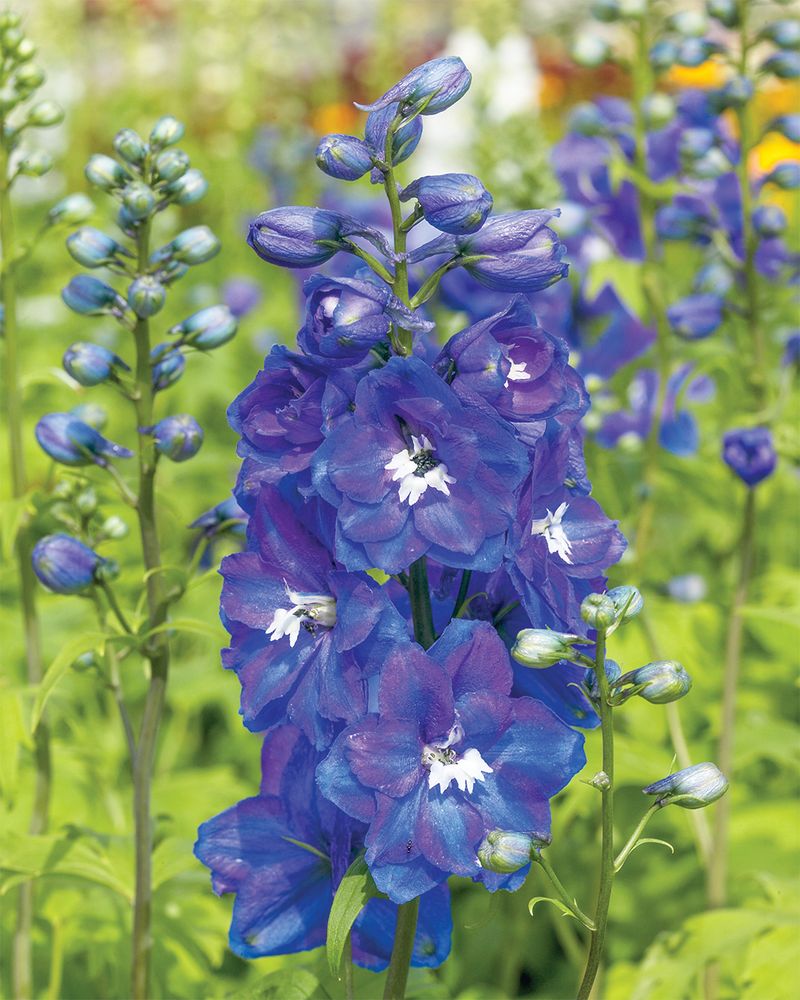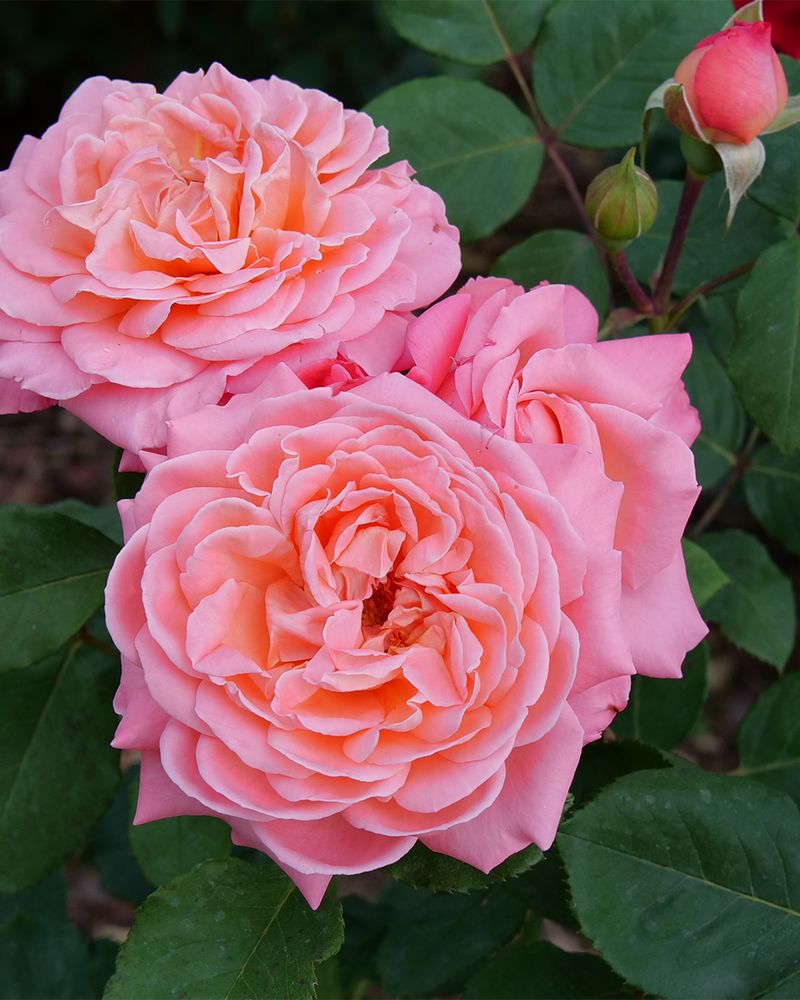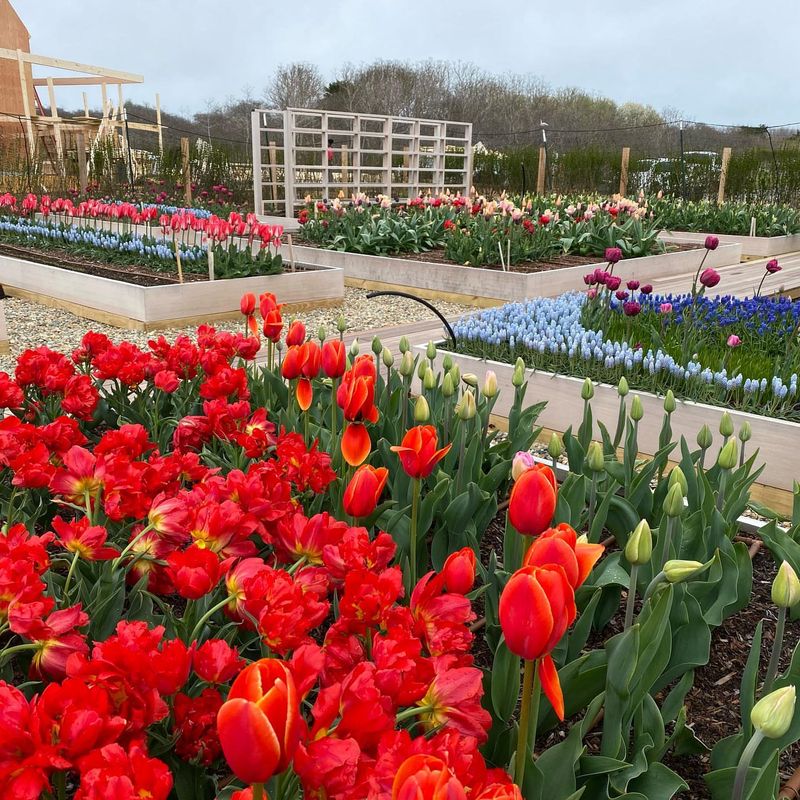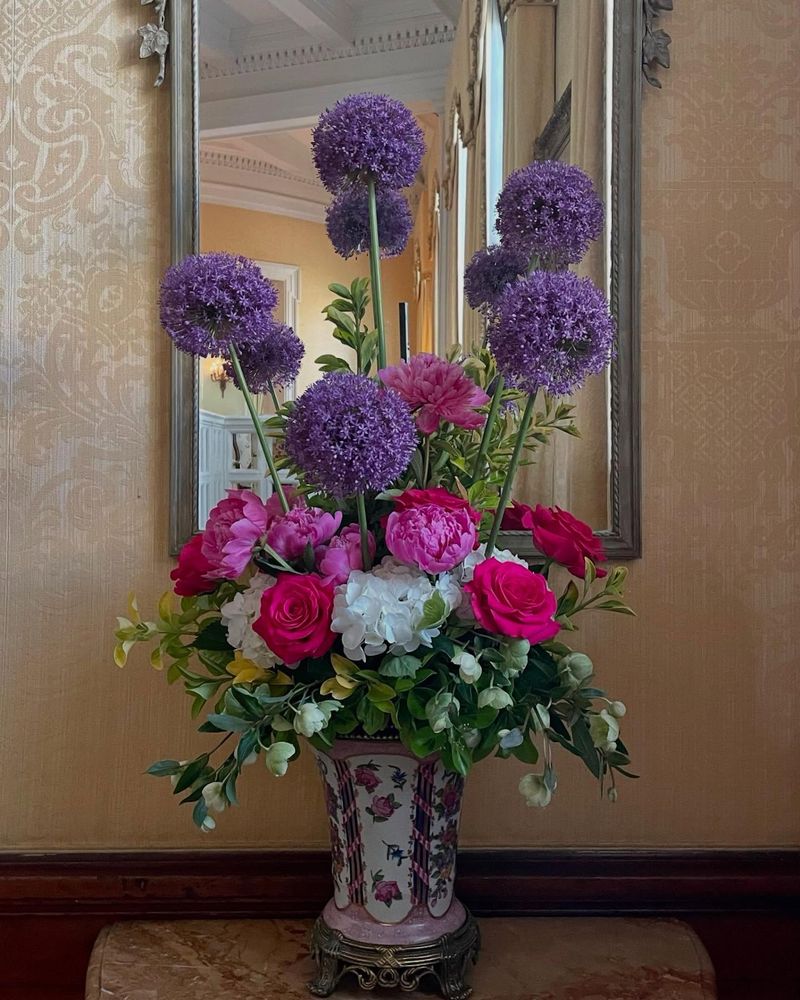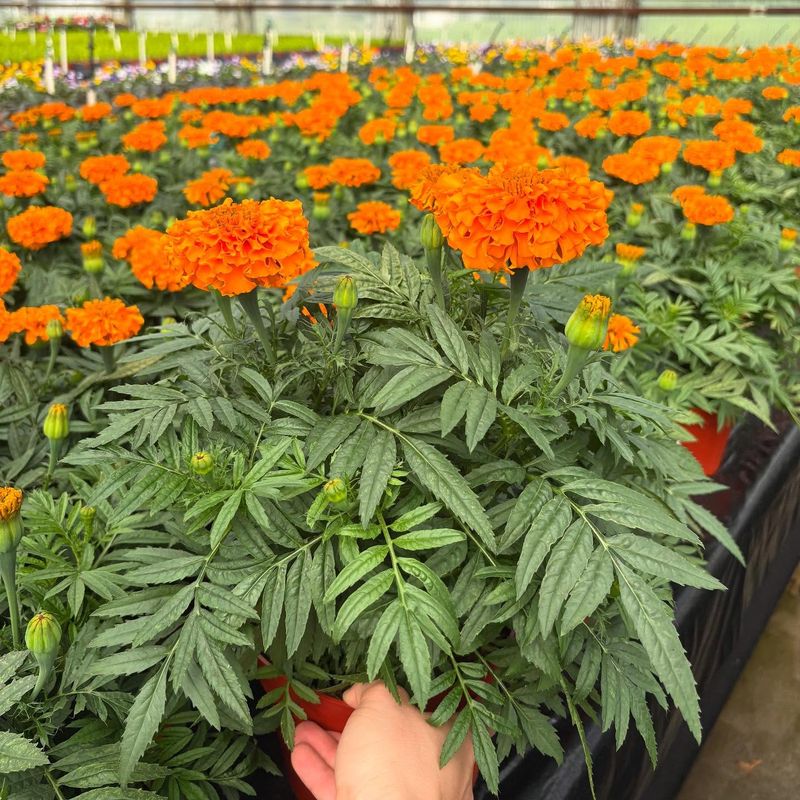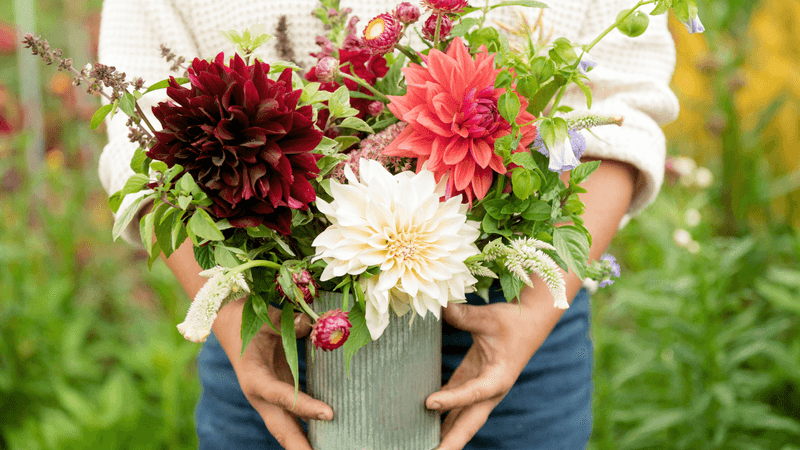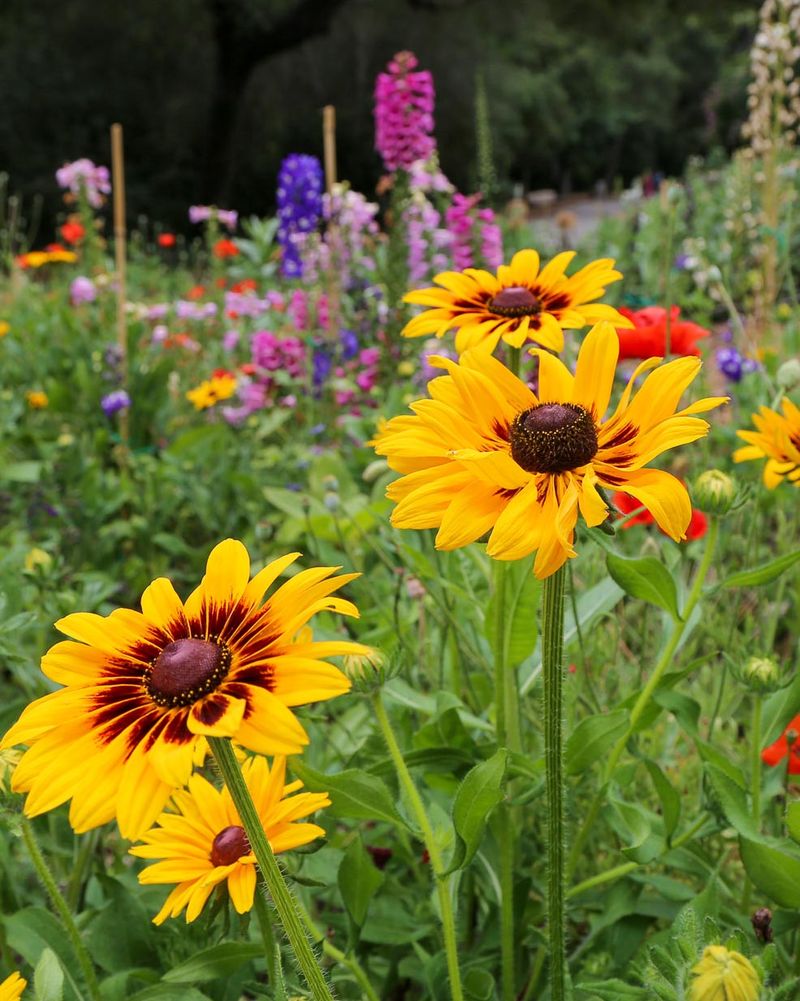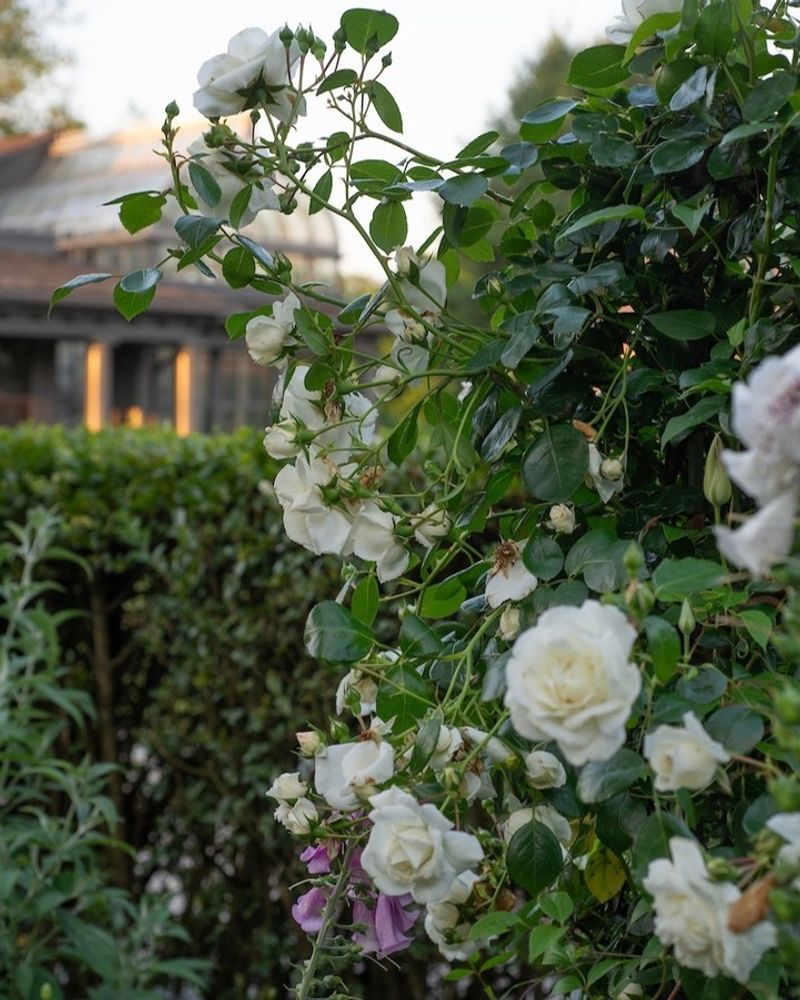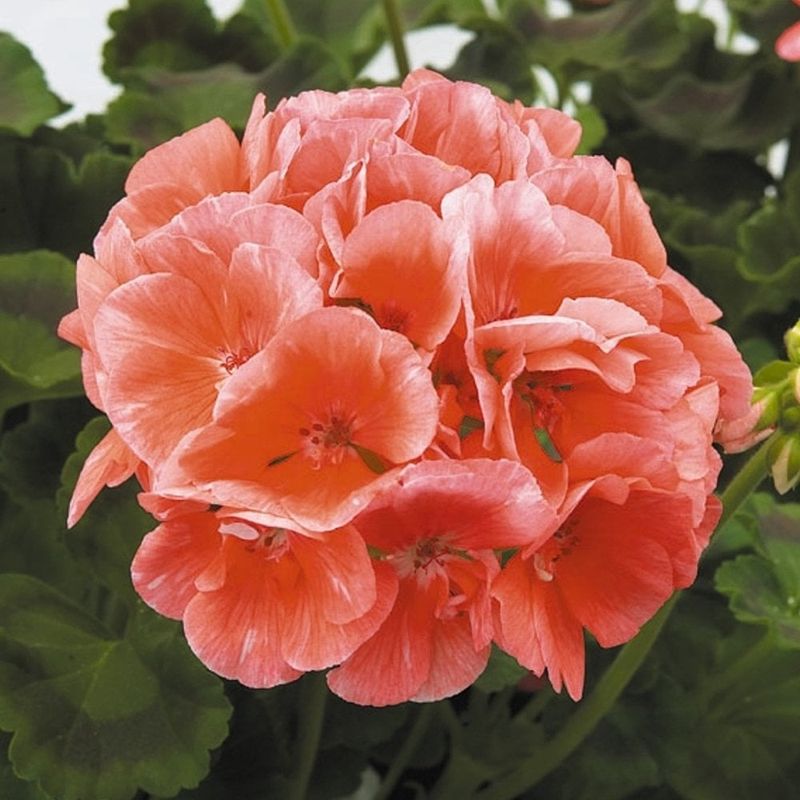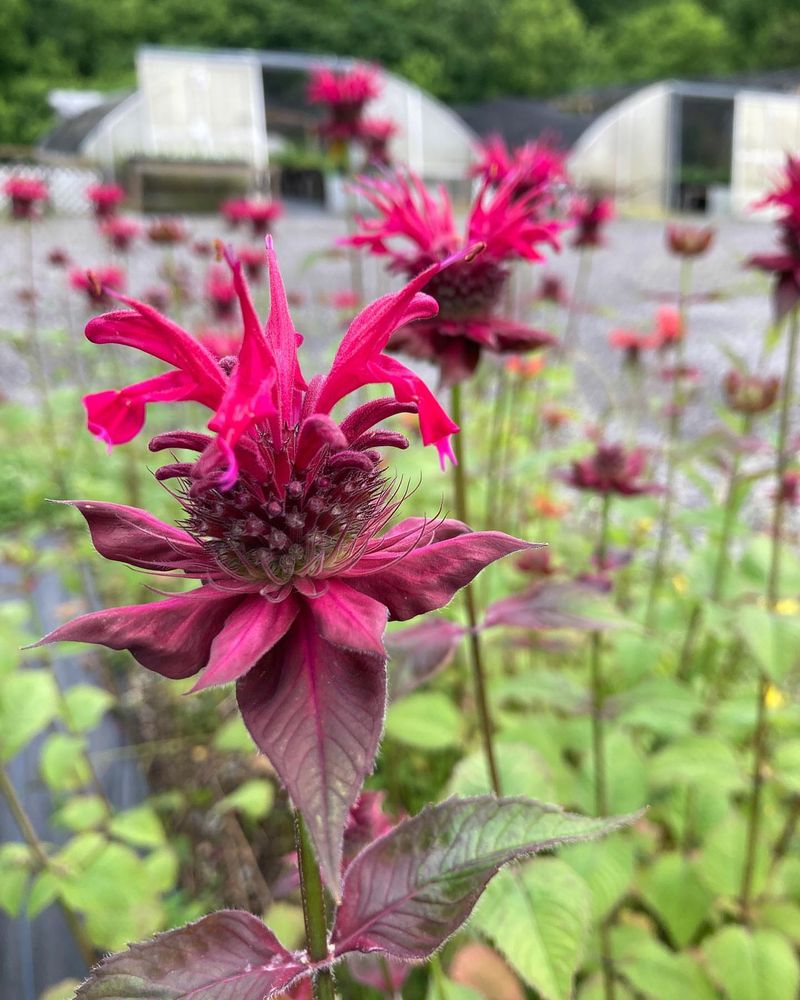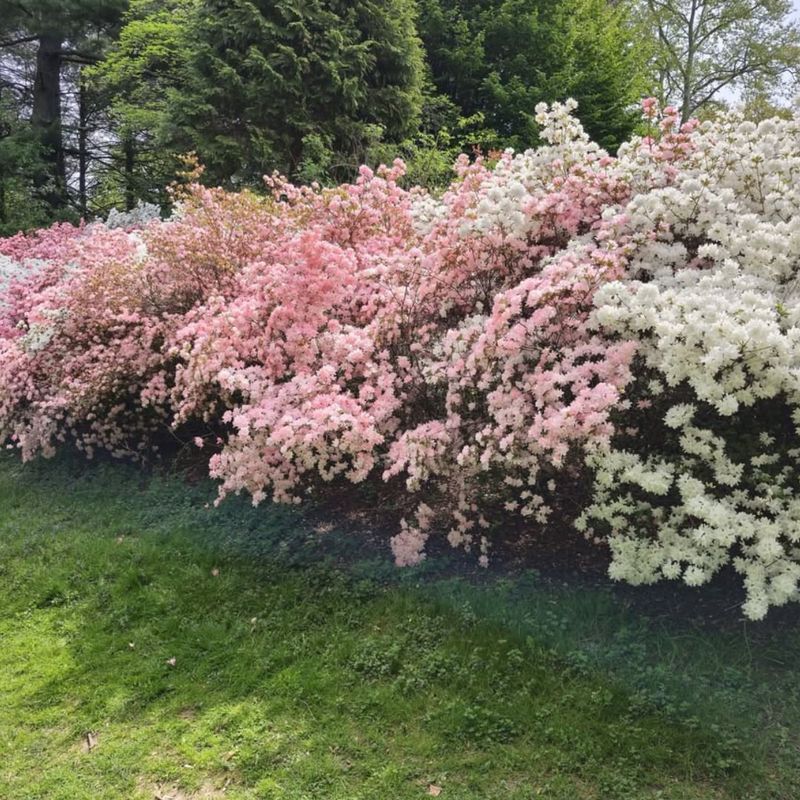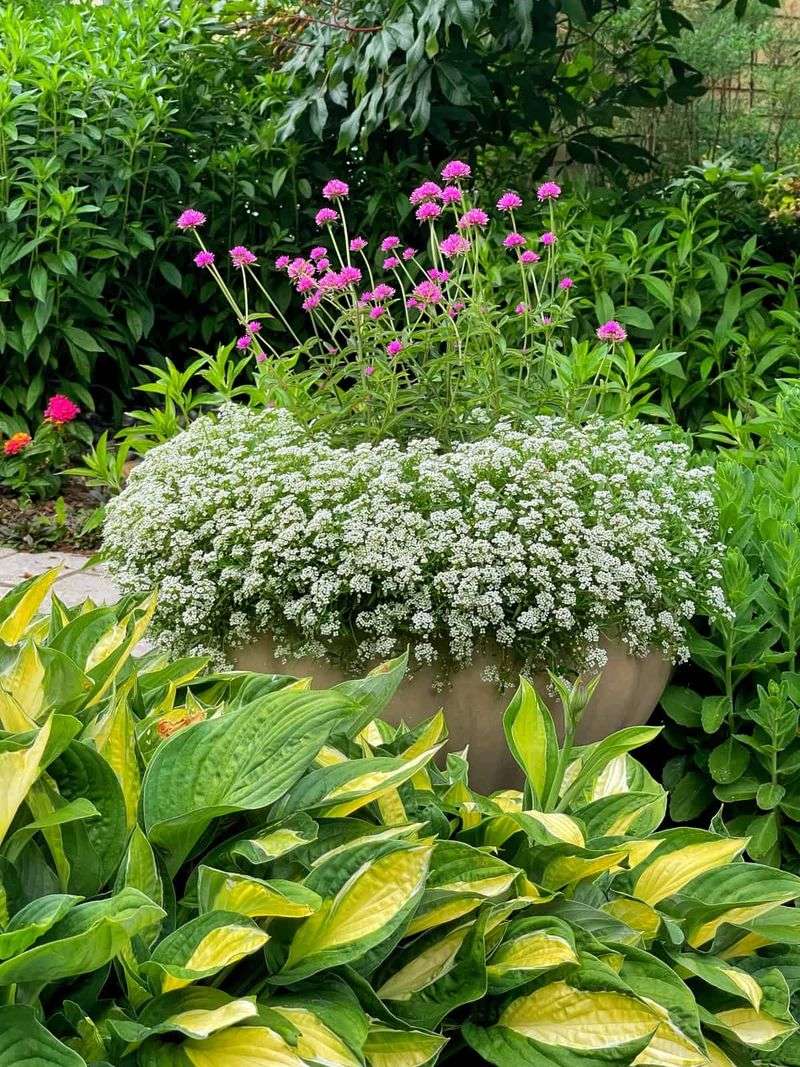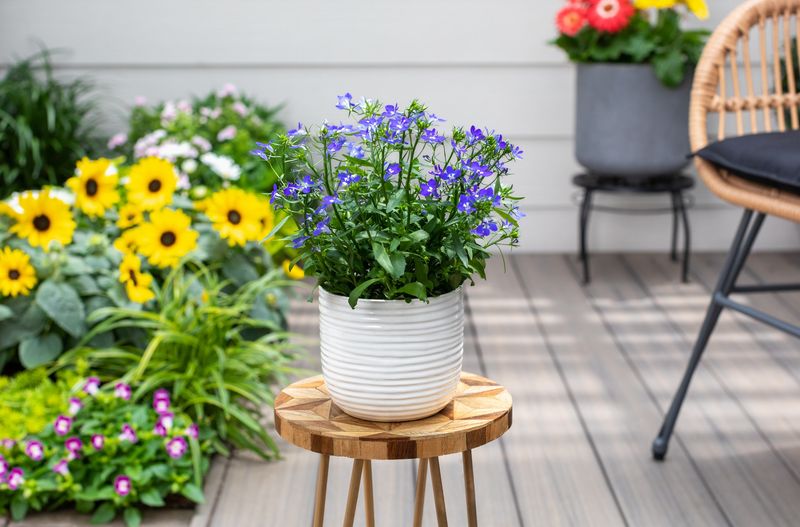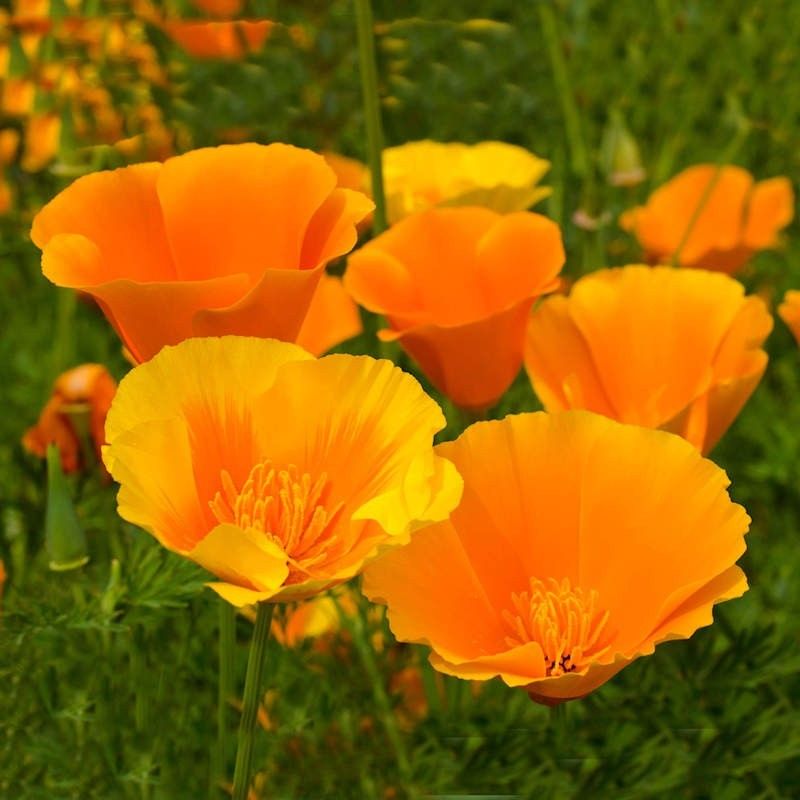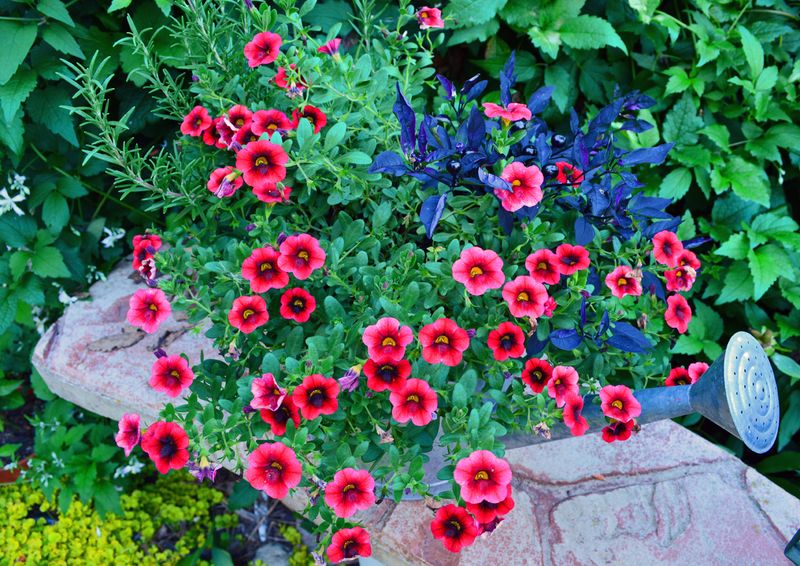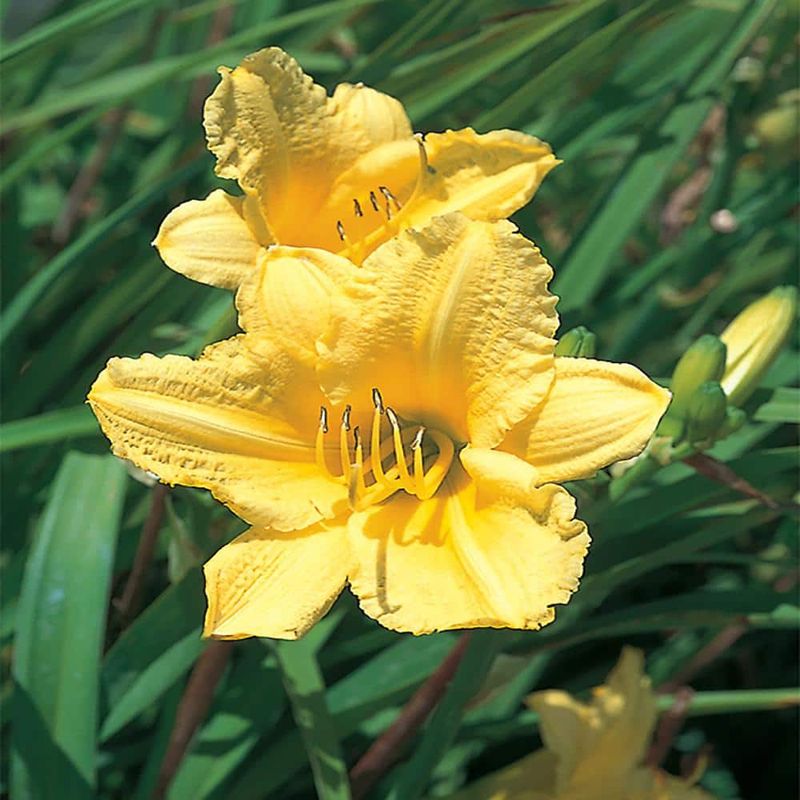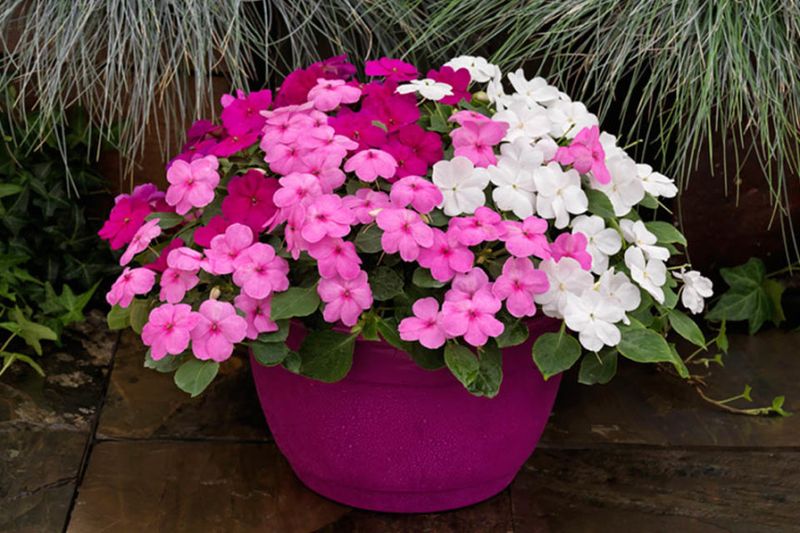A gorgeous flower bed isn’t just about choosing your favorite blooms—it’s about selecting colors that work in harmony. Thoughtful pairings can turn a patch of dirt into a standout focal point. On the flip side, clashing shades can leave things feeling chaotic and underwhelming.
When colors complement each other, the entire garden feels intentional and inviting. Try soft pastels for a calming effect, or go bold with purples and oranges for high energy. Even neutrals like white and green have powerful roles to play.
Whether you’re starting fresh or reimagining your space, these reliable color combos will help your flower beds look professionally styled. Because a garden isn’t just planted—it’s designed.
1. Purple Lavender + Yellow Daffodils
Something magical happens when the cool tones of lavender meet the sunny brightness of daffodils. The contrast creates a garden that practically sings with springtime energy.
Planting these together gives you an early-to-mid season display that’s both cheerful and sophisticated. For best results, group daffodils in clusters of 5-7 bulbs nestled between lavender plants.
My small front yard border transformed completely once I paired these two. What was once a forgettable strip became the talk of the neighborhood when these complementary colors bloomed together.
2. Deep Blue Delphiniums + White Shasta Daisies
Garden height differences create natural interest in this pairing. The tall spires of deep blue delphiniums rise majestically behind the cheerful faces of white daisies, creating depth without competition.
Many gardeners overlook the importance of white flowers as palette cleansers. The daisies here provide breathing room for the eye while making the blue appear even more intense and rich.
Seasonal timing works perfectly with these two. When planted together, they bloom almost simultaneously in early summer, creating weeks of reliable color without extra effort.
3. Coral Roses + Silver Artemisia
Texture differences make this combination stand out in any garden. The soft, feathery silver foliage of artemisia creates a misty backdrop that makes coral rose blooms appear to float.
Heat tolerance becomes a major advantage with this pairing. Both plants thrive during summer’s warmest days when many other flowers struggle, ensuring your garden stays attractive through July and August.
Last summer, I added this combo to a troublesome south-facing bed that always looked tired by mid-season. The result was remarkable – even during drought conditions, these plants maintained both color and form.
4. Red Tulips + White Muscari
Early spring gardens benefit tremendously from this classic pairing. The bold red tulips create focal points while the carpet of white muscari (grape hyacinth) fills in below, eliminating bare soil and maximizing color impact.
Bulb planting depths differ naturally between these two flowers. Tulips need deeper planting, while muscari go just a few inches down, making them perfect layering companions that won’t interfere with each other’s growth.
After experimenting with different spring combinations for years, this remains one of the most reliable. The white muscari create a frost-like effect around the tulip stems that looks intentional rather than haphazard.
5. Pink Peonies + Purple Alliums
Bloom timing makes this combination particularly effective. The rounded, lush pink peony flowers open just as the purple allium spheres rise above them on tall stems, creating a layered effect that’s both planned and playful.
Structural differences play a key role here. The globe-shaped alliums provide architectural interest while the fuller peonies create a lush base. Together, they eliminate the “flat” look many garden beds suffer from.
Growing these together for five seasons has taught me that this pairing works in both sunny and partially shaded locations, making it versatile for different garden conditions.
6. Orange Marigolds + Blue Salvia
Color wheel opposites create natural harmony in the garden. Orange marigolds and blue salvia sit across from each other on the color wheel, creating a vibrant yet balanced look that draws the eye without overwhelming it.
Practical benefits abound with this pairing. Marigolds naturally repel many garden pests, while salvia attracts beneficial pollinators, creating a functional as well as beautiful planting scheme.
Maintenance needs align perfectly between these two plants. Both prefer similar watering schedules and sunlight conditions, making this an easy-care combination that performs reliably from summer through fall.
7. Burgundy Dahlias + Cream Zinnias
Late summer gardens need reliable performers, and this combination delivers consistently. Both flowers peak when many others have finished, extending the garden season with rich, velvety burgundy against crisp cream.
Cutting garden potential makes this pairing doubly valuable. Both dahlias and zinnias make excellent cut flowers, allowing you to bring the same beautiful color scheme indoors for arrangements.
Replacing my fading spring bulb area with this combination transformed what was once a mid-summer eyesore into a second-season highlight. The contrast between dark and light creates a sophisticated look that appears carefully planned.
8. Yellow Black-Eyed Susans + Purple Coneflowers
Native garden enthusiasts appreciate this wildlife-friendly pairing. Both plants attract butterflies, bees, and even goldfinches that feed on the seedheads, bringing movement and life to the garden space.
Drought tolerance becomes a significant advantage once established. This combination thrives with minimal watering, making it perfect for low-maintenance areas or regions with water restrictions.
The casual, meadow-like appearance these create together works beautifully in naturalistic garden designs. When planted in drifts rather than formal rows, they create an established, effortless look that improves year after year.
9. White Roses + Blue Catmint
Fragrance adds another dimension to this visually striking combination. The sweet scent of white roses mingles with the minty aroma of catmint, creating a sensory experience that goes beyond just appearances.
Long-lasting performance sets this pairing apart from many others. Catmint’s lavender-blue flowers continue for months, especially when trimmed back after the first flush, while many white rose varieties repeat-bloom through summer.
The formal-informal balance works particularly well in transitional garden areas. My pathway from structured patio to casual backyard uses this combination to visually bridge the two spaces.
10. Salmon Geraniums + Silver Dusty Miller
Container gardens benefit tremendously from this heat-loving combination. The soft salmon tones of geraniums pop against the frosted silver foliage of dusty miller, creating instant sophistication in pots and planters.
Weather resistance makes this pairing particularly valuable. Both plants maintain their good looks through summer storms and hot spells when many other flowers become bedraggled or stop blooming.
Trying this in window boxes last year convinced me of its effectiveness. Even from a distance, the color contrast remained clear and attractive, brightening the front of my house from spring until frost.
11. Red Bee Balm + White Phlox
Hummingbirds flock to this pairing throughout summer. The tubular red flowers of bee balm are irresistible to these tiny visitors, while the white phlox creates a bright backdrop that makes the red even more noticeable.
Midsummer gardens often lack focus, but this combination peaks exactly when needed. As spring flowers fade and before fall colors emerge, these perennials fill the garden with reliable color and movement.
Dividing these plants every few years keeps them vigorous and provides extras to expand the display. Starting with just three of each, my backyard border now features drifts of this striking combination.
12. Pink Azaleas + White Dogwoods
Spring woodland gardens showcase this combination at its finest. The pink azalea blossoms create a colorful understory beneath the floating white bracts of dogwood trees, mimicking natural forest layers.
Dappled shade conditions suit both plants perfectly. Neither requires full sun to perform well, making this an ideal pairing for east-facing gardens or areas under tall deciduous trees.
Minimal maintenance requirements make this duo particularly appealing. Once established, both plants need little intervention beyond occasional pruning, creating a low-effort spring display that returns reliably each year.
13. Coral Impatiens + Green Hostas
Shade gardens often lack color, but this combination solves that problem beautifully. The bright coral impatiens provide consistent blooms against the varied green tones and interesting textures of hosta leaves.
Moisture needs align perfectly between these plants. Both prefer consistently damp soil, making them ideal companions in those tricky spots where regular watering is necessary.
The north side of my house transformed from problem area to garden highlight using this pairing. What was once a dark, uninviting space now draws visitors with its bright yet sophisticated color scheme throughout summer.
14. Yellow Coreopsis + Blue Lobelia
Extended blooming seasons make this combination a garden workhorse. Coreopsis flowers for months when deadheaded regularly, while lobelia continues producing blue blooms from spring through fall in many climates.
Edge plantings benefit particularly from this pairing. The compact growth habit of both plants makes them perfect for garden borders where they create a neat but colorful boundary.
Seed-saving possibilities add extra value to this combination. Both plants produce viable seeds easily collected in fall, allowing you to expand the display or share with friends without additional expense.
15. Purple Verbena + Orange California Poppies
Drought-resistant gardens shine with this water-wise combination. Both plants thrive in dry, sunny conditions where many other flowers struggle, making them perfect for xeriscaping or low-water garden areas.
Reseeding habits ensure this pairing returns year after year with minimal effort. The poppies scatter seeds that germinate with fall or spring rains, while verbena often overwinters and spreads gradually.
The casual, slightly wild appearance creates a relaxed garden atmosphere. My rocky hillside plot went from barren to beautiful with this combination, attracting compliments and pollinators alike throughout the growing season.
16. Red Petunias + Blue Petunias
Patriotic displays often use this combination, but the results frequently disappoint. Despite seeming like a natural pairing, these colors typically clash rather than complement each other in garden settings.
Color saturation levels create the main problem. Most red and blue petunias are bred for maximum color intensity, resulting in competing focal points rather than harmony when planted together.
Adding white petunias between these colors creates a much more successful arrangement. The neutral buffer helps transition between the strong hues, transforming a jarring combination into a cohesive display that works for holiday themes or season-long plantings.
17. Yellow Daylilies + Red Salvia
Garden centers often display these together, but results in home gardens frequently underwhelm. The particular shades of yellow and red typically available tend to create a fast-food color scheme reminiscent of commercial signage.
Scale differences contribute to the problem. Daylily blooms are substantially larger than salvia flowers, creating an unbalanced visual where one plant consistently dominates the scene.
Substituting coral or orange daylilies for yellow ones creates a much more harmonious combination with red salvia. The closer color relationship creates a garden that looks intentionally designed rather than accidentally assembled.
18. Pink Begonias + Pink Impatiens
Monochromatic gardens can work beautifully, but this particular combination often falls flat. When similarly sized pink flowers with nearly identical bloom shapes are planted together, they blend into a forgettable mass rather than enhancing each other.
Texture absence becomes the main issue. Without contrasting leaf shapes, plant heights, or flower forms, the garden lacks the visual interest that makes successful single-color schemes work.
Adding plants with varied foliage transforms this combination completely. Introducing heuchera, caladium, or coleus with interesting leaves creates the textural contrast needed to make the pink flowers stand out as intentional accents rather than a bland blur.

